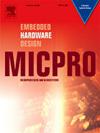Towards an embedded architecture based back-end processing for AGV SLAM applications
IF 2.6
4区 计算机科学
Q3 COMPUTER SCIENCE, HARDWARE & ARCHITECTURE
引用次数: 0
Abstract
Place recognition plays a crucial role in the Simultaneous Localization and Mapping (SLAM) process of self-driving cars. Over time, motion estimation is prone to accumulating errors, leading to drift. The ability to accurately recognize previously visited areas through the place recognition system allows for the correction of these drift errors in real-time. Recognizing places based on the structural aspects of the environment tends to be more resilient against variations in lighting, which can cause incorrect identifications when using feature-based descriptors. Nevertheless, research has predominantly focused on using depth sensors for this purpose. Inspired by a LiDAR-based approach, we introduce an inter-modal geometric descriptor that leverages the structural information obtained through a stereo camera.
Using this descriptor, we can achieve real-time place recognition by focusing on the structural appearance of the scene derived from a 3D vision system. Our experiments on the KITTI dataset and our self-collected dataset show that the proposed approach is comparable to state-of-the-art methods, all while being low-cost. We studied the algorithm’s complexity to propose an optimized parallelization on GPU and FPGA architectures. Performance evaluation on different hardware (Jetson AGX Xavier and Arria 10 SoC) shows that the real-time requirements of an embedded system are met. Compared to a CPU implementation, processing times showed a speed-up between 4x and 10x, depending on the architecture.
面向AGV SLAM应用的基于后端处理的嵌入式体系结构
位置识别在自动驾驶汽车同步定位与地图绘制过程中起着至关重要的作用。随着时间的推移,运动估计容易累积误差,导致漂移。通过位置识别系统准确识别以前访问过的区域的能力允许实时纠正这些漂移误差。根据环境的结构特征来识别地点往往更能适应光照的变化,而光照的变化在使用基于特征的描述符时可能会导致错误的识别。然而,研究主要集中在使用深度传感器来实现这一目的。受基于激光雷达的方法的启发,我们引入了一种利用通过立体摄像机获得的结构信息的多模态几何描述符。使用该描述符,我们可以通过关注来自3D视觉系统的场景结构外观来实现实时位置识别。我们在KITTI数据集和我们自己收集的数据集上的实验表明,所提出的方法与最先进的方法相当,同时成本低。研究了算法的复杂度,提出了一种基于GPU和FPGA架构的优化并行化算法。在不同硬件(Jetson AGX Xavier和Arria 10 SoC)上进行的性能评估表明,该系统能够满足嵌入式系统的实时性要求。与CPU实现相比,根据体系结构的不同,处理时间加快了4到10倍。
本文章由计算机程序翻译,如有差异,请以英文原文为准。
求助全文
约1分钟内获得全文
求助全文
来源期刊

Microprocessors and Microsystems
工程技术-工程:电子与电气
CiteScore
6.90
自引率
3.80%
发文量
204
审稿时长
172 days
期刊介绍:
Microprocessors and Microsystems: Embedded Hardware Design (MICPRO) is a journal covering all design and architectural aspects related to embedded systems hardware. This includes different embedded system hardware platforms ranging from custom hardware via reconfigurable systems and application specific processors to general purpose embedded processors. Special emphasis is put on novel complex embedded architectures, such as systems on chip (SoC), systems on a programmable/reconfigurable chip (SoPC) and multi-processor systems on a chip (MPSoC), as well as, their memory and communication methods and structures, such as network-on-chip (NoC).
Design automation of such systems including methodologies, techniques, flows and tools for their design, as well as, novel designs of hardware components fall within the scope of this journal. Novel cyber-physical applications that use embedded systems are also central in this journal. While software is not in the main focus of this journal, methods of hardware/software co-design, as well as, application restructuring and mapping to embedded hardware platforms, that consider interplay between software and hardware components with emphasis on hardware, are also in the journal scope.
 求助内容:
求助内容: 应助结果提醒方式:
应助结果提醒方式:


